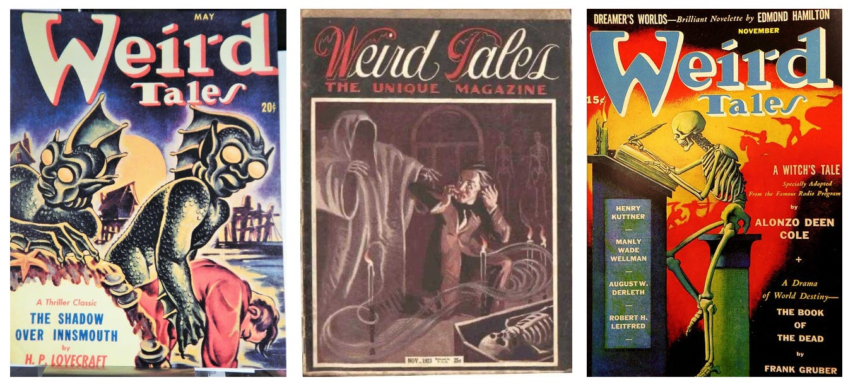World War Two
Published 5 Aug 2023As the Red Army closes in on Warsaw, the Polish Home Army in the city rises up against the German forces. Up in the north the Red Army takes Kaunas. The Allies take Florence in Italy this week, well, half of it, and in France break out of Normandy and into Brittany. The Allies also finally take Myitkyina in Burma after many weeks of siege, and in the Marianas take Tinian and nearly finish taking Guam. And in Finland the President resigns, which could have serious implications for Finland remaining in the war.
(more…)
August 6, 2023
The Warsaw Uprising Begins! – WW2 – Week 258 – August 5, 1944
Chaffee Reece Model 1882: A Good Idea on Paper …
Forgotten Weapons
Published 29 Aug 2017Patented in 1879 by Reuben Chaffee and General James Reece, the Chaffee-Reece rifle is an excellent example of how an idea that seems good on paper can easily become untenable in a fielded rifle. The main design premise of the rifle was to have a tubular magazine in the buttstock which held the cartridges out of contact with each other, as opposed to being pressed together by a magazine spring as in a conventional design. This would notionally prevent any possibility of recoil or other forces causing the bullet of our round to impact the primer of another and cause a detonation in the magazine.
In initial testing by the Army in 1882, the prototypes were appealing, and a field trial of 750 rifles was requested. Chaffee and Reece were unable to find a commercial manufacturer willing to take on the production (except Colt, which offered to make just 200, and at the cost of $150 etc), and they ultimately turned to the government-operated Springfield Arsenal to build the guns. A total of 753 rifles were made by Springfield in 1883 and 1884 (interestingly, not serial numbered) and delivered for testing.
That testing went quite badly. The magazine was a very complex system, using two sets of basically reciprocating racks to shuttle cartridges up the magazine as the bolt was cycled, without allowing them to contact each other. It proved very prone to jamming and breakage, and was both extremely difficult to keep clean and very susceptible to, as they would have called it at the time, “derangement”. It was handily beaten by the Winchester Hotchkiss 1885 pattern rifles (among others) in field trials, and that was the end of its potential for adoption. The rifles were eventually sold as surplus, and bought by the Bannerman company, where they remained in stock and available for purchase until at least 1907.
(more…)
QotD: Pierre Trudeau’s legacy
I have banged on and on and on, to the annoyance of some of my readers, about how Pierre Elliot Trudeau reshaped Canada, almost entirely, in my considered opinion, for the worse. I have singled out, frequently, his evident distaste for the Canadian military and his very real isolationism and reluctance to have armed forces, at all.
There is a lot of documentation about Pierre Trudeau and his views and attitudes, much of it laudatory, some of it critical. I make no secret of the fact that I assert that one Canadian prime minister (perhaps, in my opinion, Canada best-ever leader) the great Liberal Louis St. Laurent, gave Canada a coherent, principled, liberal, values-based grand strategy in the late 1940s and then, just 20 years later another Liberal, Pierre Trudeau, tore it all down, threw it all aside and imposed new, very illiberal, values on Canada ~ all because, I guess, he could not reconcile the facts that stared him in the face in the late 1940s with his own personal choice to have stood, firmly, on the wrong side of history in 1944 when he elected to continue to study (this time at Harvard) rather than to join in the fight to crush Hitler.
M. St. Laurent and M. Trudeau could not have been more different. Louis St. Laurent was an internationally respected lawyer, he was “a man of the world”, neither an anglophile, like Sir Wildred Laurier, nor an anglophobe like Trudeau, he was secure in being a Canadian. He came to politics reluctantly, as a duty, but he quickly became known to, respected by, and, indeed, often friends with Harry Truman, George Marshal, Dwight Eisenhower and Dean Acheson, with Anthony Eden, Ernest Bevin, Clement Atlee, Sir Winston Churchill and Harold Macmillan, and with Tage Erlander of Sweden, Jawaharlal Nehru and V.K. Krishna Menon in India, Sir Robert Menzies of Australia, Tunku Abdul Rahman in Malaysia and leaders, from the West, the East and the non-aligned states. Pierre Trudeau, on the other hand, was a small, very parochial man who did not, really, understand Canada, beyond French-speaking Québec. He became “famous” for opposing Maurice Duplessis ~ something, I have suggested, that would not be much beyond the intellectual capabilities of a somnolent house cat. He travelled the world but never seemed, to me, to have acquired the respect that was accorded to Louis St. Laurent or Mike Pearson … except, perhaps from Fidel Castro.
Ted Campbell, “Pierre Trudeau’s legacy”, Ted Campbell’s Point of View, 2019-08-02.





